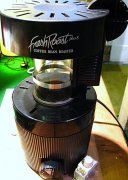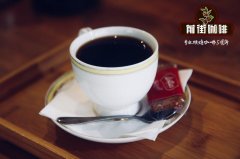Coffee roasting from practice-roasting knowledge that cannot be learned in coffee roasting school

Professional coffee knowledge exchange more coffee bean information please follow the coffee workshop (Wechat official account cafe_style)
A complete collection of coffee roasting techniques | the purpose of coffee roasting and the characteristics of coffee beans
From the place of origin to the pot cup, the most relevant intermediary point for the smell of coffee is roasting. We plant coffee trees in the tropics, condensing the abundant equatorial sunlight into coffee beans, and then through the baking process, the grass-flavored wood is baked into caramel sweetness, cream and flower and fruit aromas. The smell of coffee bursts through heat, releasing delicate and rich bean fragrance. According to the analysis of scientists by gas chromatography, roasted coffee can contain as many as 800 odor factors.
Looking closely at the fragrance notes on the coffee package, we seem to have spread out a book of fragrance notes. You can smell a luxuriantly planted orchard, a mountain peak, the gurgling flow of hydrology in several bays, and the locker of the dessert chef. Although these different smells and landscapes are rooted in one side of soil and water and coffee trees, the technique and depth of baking are the key to the separation and adjustment of various smells! Generally speaking, the lower temperature of coffee beans (that is, the temperature at which the roasting is completed) is between 190and 230℃ (Note: the temperature varies according to the design of each baking machine and the temperature measuring point), depending on the flavor you want to show. When heat converts the water vapor in coffee beans into water vapor, the sugars, proteins, oils and minerals rich in seeds also begin to have chemical changes. Mena's reaction produces bitter sweet glycosylamine and various delicate aromas.
How can we master these delicate and easy-to-disperse smells? This is the focus of coffee roasting. The baking method and time will vary according to the taste that each baker wants to show. Basically, if the baking time is too short, the elements in the bean seed will not have time for chemical reaction, and the coffee beans will have a bitter taste due to the incomplete volatilization of astringent polyphenols. The acid from the decomposition of sugars has not been destroyed by heat, so you will get a cup of sour and bitter. On the other hand, if the baking time is too long, both good and bad smells will dissipate, and the common baking bitterness will replace the rich characteristics of coffee beans.
The allocation of baking time and temperature depends on the way of bean seed and extraction, and the coordination between baking and extraction is a professional knowledge. a barista may choose to re-roast to continue the flavor of this cup of coffee as much as possible because of the strong roughness of beans. On the other hand, if you get the beans with delicate and complex flavor in the producing area, the baristas may choose to roast them shallowly so that the bitter flavor produced during the re-baking process will outweigh the original odor factors of the beans.
After Qianjie Coffee decided to start using self-baking beans, the first thing to decide is the formula.
The aroma of coffee varies in many ways, and the process of brewing these flavors is an intoxicating knowledge, which is related to science, craftsmanship and culture. About coffee, we have a series of scent scenery worthy of detailed exploration, starting with a cup of coffee, after all, coffee roasting, taste is the most comfortable stage.
Roasting can bring out a hundred deeper and delicate flavors of coffee, and professional roasters will record the temperature of each roast, the humidity of the external environment and the temperature, so as to observe so intently in order to better grasp the flavor of each batch of coffee.
Roasting can bring out a hundred deeper and delicate flavors of coffee, and professional roasters will record the temperature of each roast, the humidity of the external environment and the temperature, so as to observe so intently in order to better grasp the flavor of each batch of coffee.
Roasted coffee beans will taste more rounded after three to five days of sealed storage and need to be drunk within a month.
Whether it is the weather, season or dry humidity will affect the baking process, such as coffee beans in winter and summer, the room temperature is different, so in the baking process also needs to be adjusted accordingly, the flavor of the finished product will be the same.
Whether it is the weather, season or dry humidity will affect the baking process, such as coffee beans in winter and summer, the room temperature is different, so in the baking process also needs to be adjusted accordingly, the flavor of the finished product will be the same.
Drum roaster (Drum Roaster) is a common type of roaster in which coffee beans are roasted as they rotate in a drum. The baking method can basically be divided into two ways: semi-hot air and direct fire, the former mainly relies on hot air convection to heat the beans, and the flavor of the baked beans is more uniform and mild, while the latter will make holes in the drum, and the beans are mainly heated by the rollers contacted by direct fire, and the flavor of the finished product is strong and direct. Both roasting methods have air convection, mainly in order to take away the smoke produced in the baking process and make the flavor of the coffee clean.
Drum roaster (Drum Roaster) is a common type of roaster in which coffee beans are roasted as they rotate in a drum. The baking method can basically be divided into two ways: semi-hot air and direct fire, the former mainly relies on hot air convection to heat the beans, and the flavor of the baked beans is more uniform and mild, while the latter will make holes in the drum, and the beans are mainly heated by the rollers contacted by direct fire, and the flavor of the finished product is strong and direct. Both roasting methods have air convection, mainly in order to take away the smoke produced in the baking process and make the flavor of the coffee clean.
On the way to baking beans, the color and smell of beans change quickly, and it takes experience to accurately master them, so as to get an ideal cup of coffee.
Basic and advanced sharing of coffee roasting experience and knowledge
Important Notice :
前街咖啡 FrontStreet Coffee has moved to new addredd:
FrontStreet Coffee Address: 315,Donghua East Road,GuangZhou
Tel:020 38364473
- Prev

How much is the home coffee roaster? Introduction of FR8+ hot air type household coffee bean roaster
Professional coffee knowledge exchange more coffee bean information please follow the coffee workshop (Wechat official account cafe_style) Coffee roasting skills Daquan | Coffee roasting purpose and characteristics of coffee beans [FR8+] Fresh Roast 8 Plus domestic coffee bean roaster FR8+ hot air coffee raw bean roaster, this is also a necessary tool for ashes players, out of the factory so far
- Next

American Coffee Ice + Hot Coffee recipe tutorial how many kinds of American coffee do you have?
Professional coffee knowledge exchange more coffee bean information please follow the coffee workshop (Wechat official account cafe_style) American coffee _ what is American coffee iced coffee method (talent teaching): tools: snow cup formula: sugar, cream (or iced milk), espresso, ice cubes (mouth can not be adjusted according to your personal preference) after preparing coffee (coffee)
Related
- Beginners will see the "Coffee pull flower" guide!
- What is the difference between ice blog purified milk and ordinary milk coffee?
- Why is the Philippines the largest producer of crops in Liberia?
- For coffee extraction, should the fine powder be retained?
- How does extracted espresso fill pressed powder? How much strength does it take to press the powder?
- How to make jasmine cold extract coffee? Is the jasmine + latte good?
- Will this little toy really make the coffee taste better? How does Lily Drip affect coffee extraction?
- Will the action of slapping the filter cup also affect coffee extraction?
- What's the difference between powder-to-water ratio and powder-to-liquid ratio?
- What is the Ethiopian local species? What does it have to do with Heirloom native species?

